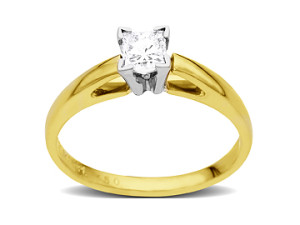 As recently as fifteen years ago, an ounce of gold cost around $385.00. Today, an ounce of gold is closer in price to $1,700.00. Aren’t you curious what this means for the jewelry consumer? For some, the price of gold jewelry is out of reach. Some jewelry manufacturers compensate by making pieces lighter in weight or use a base metal and overlay a thin surface of gold. It is important to know what you are buying when you purchase gold jewelry. By understanding how gold is used in jewelry, you can decide what is right for your budget.
As recently as fifteen years ago, an ounce of gold cost around $385.00. Today, an ounce of gold is closer in price to $1,700.00. Aren’t you curious what this means for the jewelry consumer? For some, the price of gold jewelry is out of reach. Some jewelry manufacturers compensate by making pieces lighter in weight or use a base metal and overlay a thin surface of gold. It is important to know what you are buying when you purchase gold jewelry. By understanding how gold is used in jewelry, you can decide what is right for your budget.
How is gold quality measured in jewelry?
Fine Gold: Also known as 24 karat gold, this is elemental gold in its purest state. It is lustrous, malleable, and bright metallic yellow. The  softness of pure gold can be problematic for jewelry manufacturers as fine gold can be easily bent. Jewelry designs for fine gold must take into consideration its softness and tendency to show wear.
softness of pure gold can be problematic for jewelry manufacturers as fine gold can be easily bent. Jewelry designs for fine gold must take into consideration its softness and tendency to show wear.
22 Karat Gold: 22 karat gold is 91.67% pure gold. Fine gold is combined with small amounts of silver and copper, and sometimes zinc. Similar in appearance to fine gold, the small amounts of fine silver and copper improve the alloy’s “memory” which makes it more resistant to becoming bent out of shape. 22 karat gold is always a rich yellow color.
18 Karat Gold: 18 karat gold is 75% fine gold and 25% other metals. 18 karat gold jewelry will sometimes bear the marking “750” which refers to the alloyed material content 750 parts per thousand pure gold. Depending on the alloy composition, 18K gold comes in many different colors. Fine gold alloyed with silver and copper yields a bright yellow metallic luster. An increase in the copper content will produce a rosy hue often referred to as pink gold, rose gold, or red gold. Increasing the white metal content by using 25% palladium or nickel will produce white gold, which is very popular for bridal jewelry.
14 Karat Gold: 14 karat gold is 585 parts per thousand pure gold, or just slightly over half pure gold content. 14 karat gold can be combines to make the same range of colors as 18 karat gold, including yellow, white, and rose by increasing the silver, nickel or palladium, and copper content in the alloy. Versatile, durable, and attractive, 14K gold is a popular jewelry metal.
10 Karat Gold: When gold content falls below 10 karat, the Federal Trade Commission of the United States disallows the karat gold stamp on jewelry. At 41.7 percent pure gold, the appearance of 10 karat gold is noticeably lighter than higher karat alloys. 10 karat is the minimum fineness that a piece of jewelry can be and still be called gold.
Gold filled: Gold filled jewelry has a thin layer of gold bonded to a base metal that is not gold. The base metal may be bronze or brass and may not have intrinsic value of its own. For an item to be described as gold filled, the gold layer must be at least 10 karat. The gold content must be at least 1/20th of the total weight of the piece. The words “gold overlay” or “gold filled” must be used in the jewelry description. If less than 1/20th of the total weight is gold, the exact ratio must be expressed.
Gold plated: Gold plated jewelry involves a thin layer of at least 10 karat gold adhered to a base metal by an electrolytic process. The gold electroplate must be at least .175 microns thick. To give you an idea of how much gold is in gold plated jewelry, remember that a micron is one-thousandth of a millimeter and is most often used to describe the width of a single strand of hair. The gold plating on jewelry is thinner!
Vermeil: Vermeil refers to a very specific type of gold plating. In vermeil, the base metal is either sterling or fine silver. The gold overlay must be at least two and a half micron thick. That is almost fifteen times thicker that the minimum gold requirement for gold plated jewelry.
Gold jewelry is a classic wardrobe staple. Hammered discs and links strung together by sections of thin chain are a big trend right now. Can you guess why? Maximizing the surface area for a big gold look while keeping the total weight low makes perfect sense, given the current price of gold. Do you have a clearer idea of what goes into your gold jewelry? Would you consider gold plated jewelry as an alternative to solid karat gold? Can you tell the difference between white gold and platinum? We want to hear from you.
